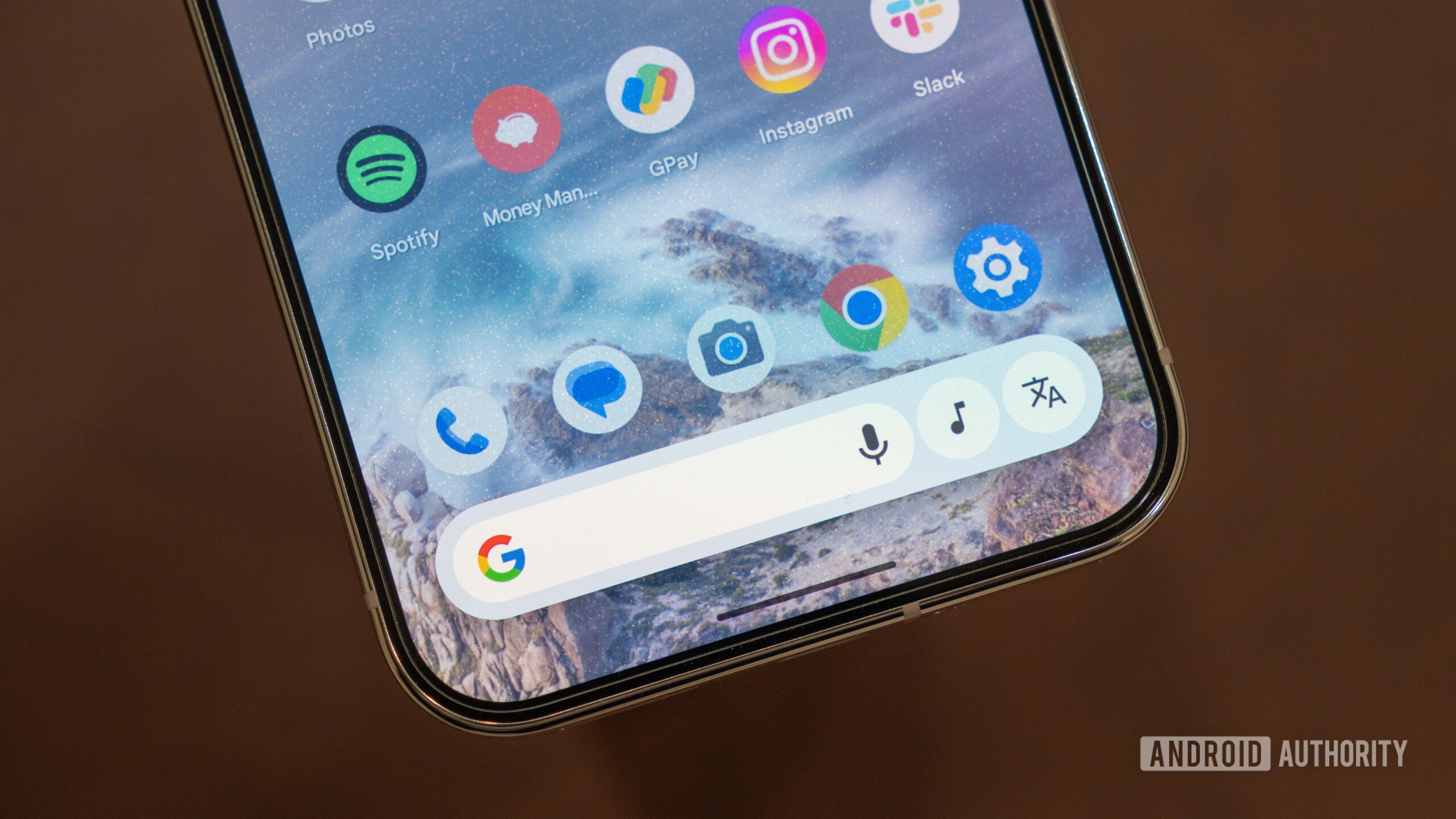
Aamir Siddiqui / Android Authority
I’ll admit: long-pressing the home button to trigger a visual search was a genius move by Google. I use Circle to Search more often than I ever thought, whether it’s to identify plants, bugs, or famous landmarks in TV shows. Surprisingly, it also has a hidden talent for identifying colors.
Many web pages and apps help identify colors, providing all the details you might need, and sometimes even more, like additional codes and values. The problem with these tools is that you must upload an image, describe the color, or use a color wheel or slider. They’re not immediately accessible. With Circle to Search, long-pressing the home button beneath my thumb is all that’s needed.
Have you found a use case for Circle to Search?
66 votes
Color is all about perception. One person might see a gold dress, while another sees a blue one. To clarify this ambiguity, we assign specific names or values to colors. For instance, Aquamarine, Cerulean, and Navy Blue are all specific tints and shades of blue but vastly different. Whether ordering paint for your kitchen wall based on your Pinterest mood board or selecting complementary colors for a DIY Android widget, having a tool that can accurately identify colors is useful.
What color is that couch? Circle to Search has an answer

Andy Walker / Android Authority
I hilariously stumbled upon this Circle to Search feature when trying to identify something else entirely, but I was interested to see how good it is when specifically targeting solid colors. I triggered the tool to test these capabilities and highlighted small splotches of solid colors on my home screen and various web pages. This activates a Google search with an AI Overview blurb, a list of related results, and specific hex or color codes in some cases.
Sometimes, AI Overview provides a hex code. Alternatively, it offers context about that specific color, be it another identifier, like RGB or CMYK, or a few “facts” about it. For instance, the dark blue (second image) represents “depth, stability, and calmness” according to the search tool. This information may not be helpful to everyone, but it’s just the type of description I’d need when choosing paint for a specific room. It still offers valuable information even if it doesn’t have much to say about a color. This salmon shade I ran through it (third image) suggested a paint color available at my local hardware store!
After seeing these results, I wanted to test how well Google knew Pantone colors. I pulled up a palette detailing the year’s hues and got to work.
It accurately identified Olive Green and provided an RAL code — a color identification system used for varnish, powder coatings, and plastics. Oddly, it struggles with more generic colors. It identified Pantone’s Orange Peel as simply “Pantone Orange” and offered a separate product using that shade. That’s useful, I guess, but hundreds of Pantone orange varieties are available.
Notably, if you’re not using a solid color taken directly from the web, Circle to Search is easily influenced by textures, shadows, and the quality of your camera. The same couch will look different in direct sunlight and fluorescent light. Be aware of this when walking around with your camera, snapping products, and hoping to pinpoint their color later. It does a pretty good job with fabrics, though, offering more information on my couch cushion.
Just don’t use it for professional work, OK?
A more embarrassing miss occurred with a particularly fetching blue from Samsung’s default wallpaper set. AI Overview identified it not as a color, but as a sanitary product. I’m unsure how AI Overview arrived at this answer, but it seemed pretty convinced! I also focused on the yellow dot in the image, which the tool believed was a part of a banana. This one did get a chuckle out ot me.
That conviction becomes a problem in other ways, too. Take this accent color we use across Android Authority.
Circle to Search mentions that the color is a “mix of blue and green” and offers descriptions like Ocean Green, Dark Sea Green, and Sea Blue, which are in the ballpark but aren’t home runs. Only when I scroll down to the related search results do I find a hex code that matches the color almost exactly. A more accurate answer exists, but AI Overview prioritizes the less precise information first. These errors are rare, but they affect the reliability of all the results I receive.
I can’t expect Circle to Search to be a perfect color identifier, but I’m surprised that it did so well in my tests.
Look, I can’t expect Circle to Search to be a perfect color identifier, especially compared to more specialized tools. Color science requires precision, and Circle to Search is designed as a general visual search tool. As I’ve mentioned, the results also depend on the source you’re using. As a result, there’s a degree of variability that’s involved. Your phone’s camera or screen might not capture or present a color-accurate image of a couch, cushion, wall, or plant pot, particularly when filters are applied or lighting conditions vary. It’s also easily thrown by textures and shadows. In short, Circle to Search isn’t for mission-critical work. You shouldn’t use it for professional purposes, but for everyone else, it makes snapshot color identification more accessible. It’s a great way to learn about colors or garner inspiration. I certainly learned plenty.
Nevertheless, despite its flaws, I’m still surprised it did so well in my tests. With a little more work, Google could have a surprisingly reliable Circle to Search use case. I already use the tool to identify structures, dog breeds, flowers, and actors. I can now add colors to this rather odd list.